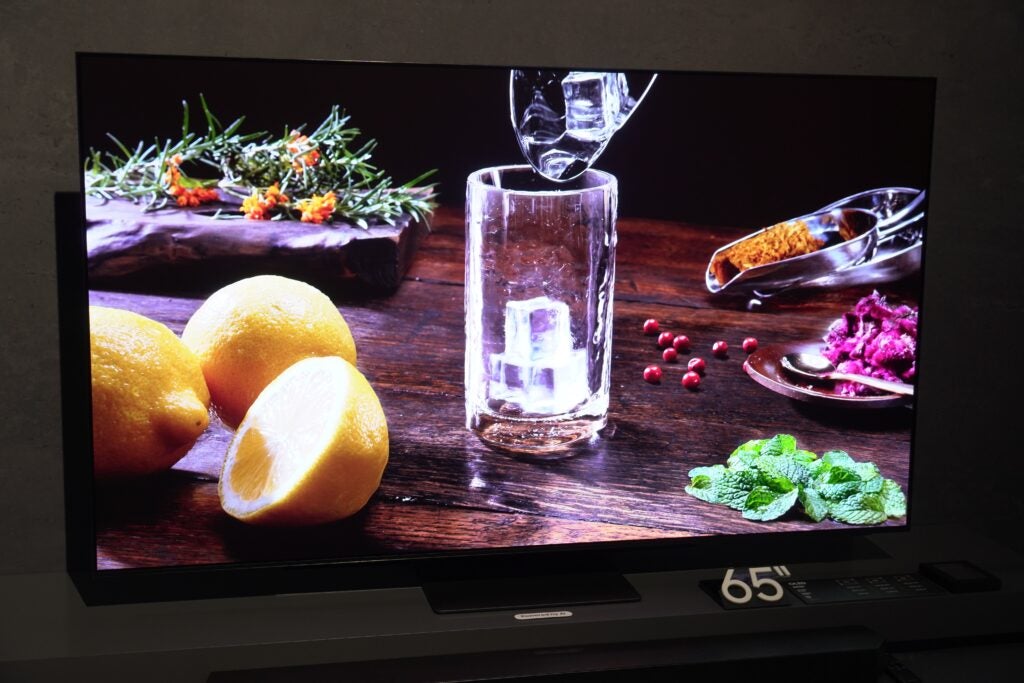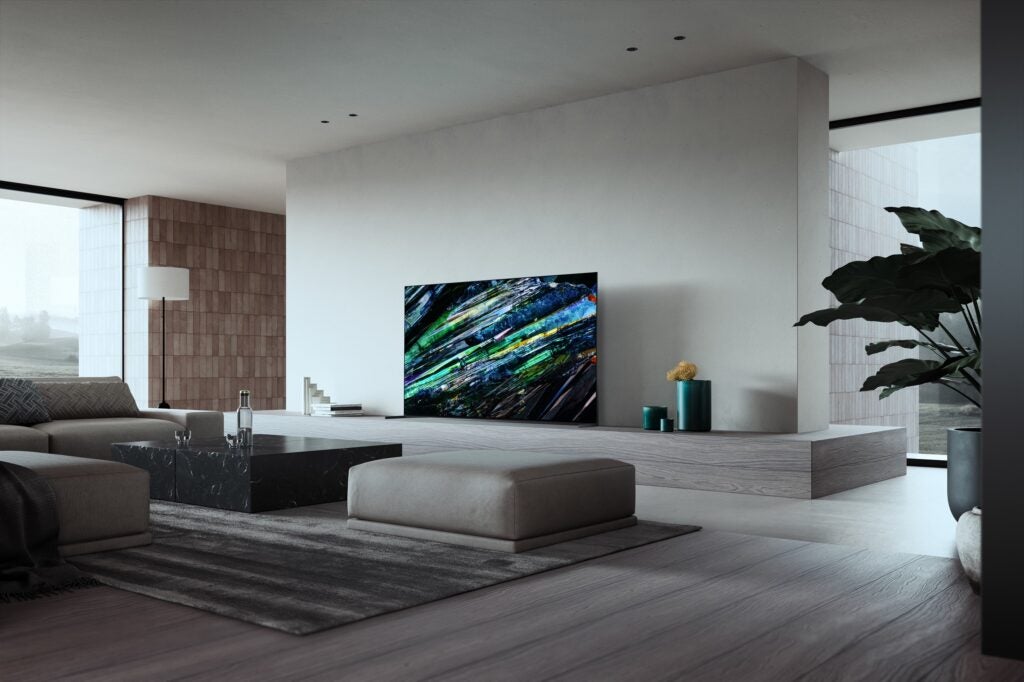OPINION: I attended the World of Samsung in Frankfurt this week, where the Korean electronics company laid out its vision for the devices it makes, all of which could be summed up as an unrelenting focus on AI.
At the core of Samsung’s products is AI that relieves annoyances, AI that relieves stress or fuss, AI that makes picture quality better. It’s an interesting message, perhaps even a compelling one to buy into as technology continues to progress.
I, however, am focused on Samsung’s TVs – specifically its OLEDs and the messaging around those screens. Suffice to say it’s not quite as clear as its stance on AI.
After years of giving OLED TV screens a view of its backhand – at times the competition overstepped – it’s now embraced the technology; first through creating its own version in QD-OLED, and secondly in striking a deal with LG Display to purchase screens from its rival.
At CES, Samsung announced the S90D model will be available in sizes ranging from 42- to 83-inches. The problem with that statement is QD-OLED panels aren’t manufactured in 42-, 48- or 83-inch sizes, so those sizes will be LG Display’s WOLED panels.
Samsung started doing this mix-and-match approach in 2023, adding an 83-inch version of the S90C, but it stands to reason that not every OLED TV is alike; and that mixing QD-OLED and LG Display’s WOLED panels – which offer different performance – can be the source of confusion.


Are buyers keen-eyed enough to spot the difference or even be aware of it? Samsung Electronics seemed keen to not distinguish the difference between QD-OLED and OLED from the start, which baffled me because it looked as if Samsung didn’t want customers to know that QD-OLED was (at the time) a step forward in picture quality.
And now that it’s engaging in mixing different types of OLED screens, it runs the risk of people thinking they’re going to get one TV but perhaps getting something else.
Sony, on the other hand, included its A95K and A95L as part of its OLED line-up, but also made it clear that both were QD-OLED TVs, whereas Samsung rather hides behind infrequent mentions of QD technology. It’s rare you’ll even see that terminology used in product descriptions of its QD-OLED TVs.
I understand that Samsung wants to keep its marketing clear and simple, but the market that I imagine for these TVs – especially at the prices previous models have gone for – is the type where people know their QD-OLED from their WOLED panels, and are looking for a performance that fits their requirements. Imagine spending a huge amount on an 83-inch S90D only to find out it doesn’t boast the same level of performance as some of the smaller screen sizes.


I think it’s much simpler to be clear and consistent, like with Sony’s messaging. The QD-OLED is the flagship TV model, it has technology not available in any other TV they offer, which in turn causes potential buyers to be interested because they want the best.
Perhaps this is me making a molehill of a mountain but Samsung’s approach doesn’t sit right with me. It would almost make more sense if it called the WOLEDs the S85C range and promoted it around the idea of “small and large” OLED options. That to me has more of a hook.
It’s great that Samsung seems committed to the OLED market, providing much-needed competition to LG, but I do wonder whether in trying to make its messaging simpler it’s made it confusing. Perhaps this is another use for AI like ChatGPT, if it could sift through all the information and make some sense of it.

